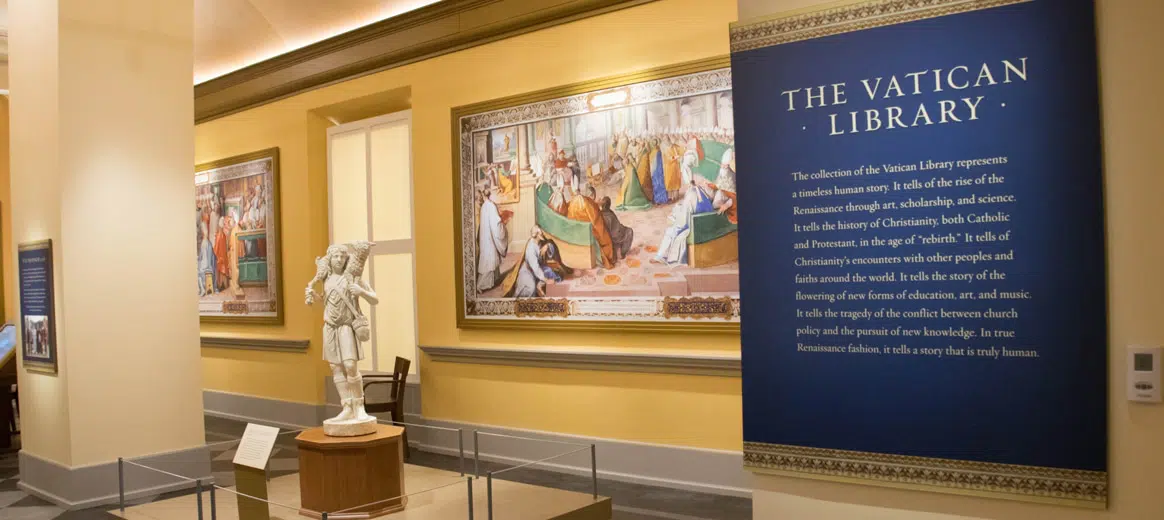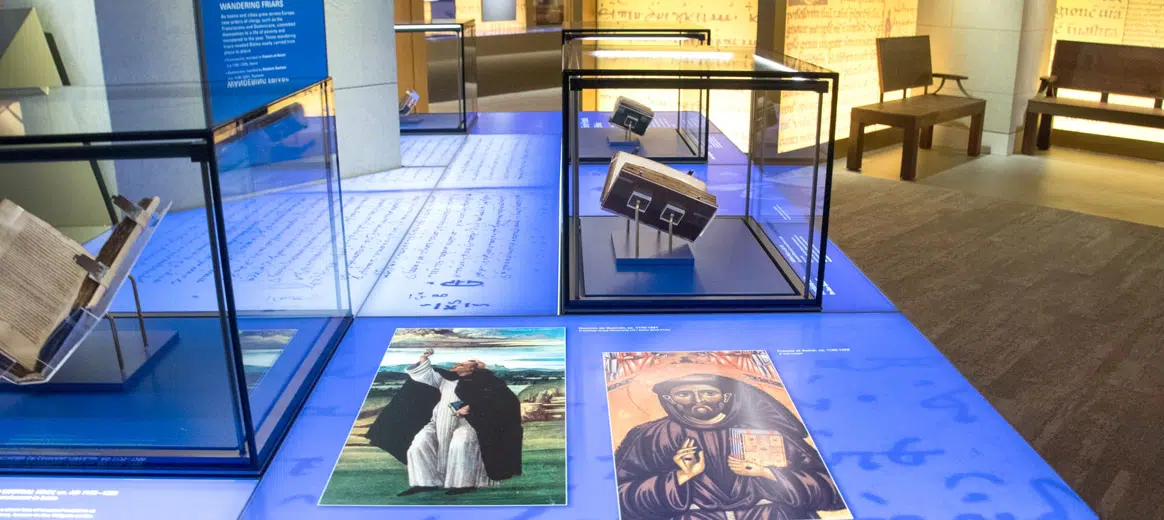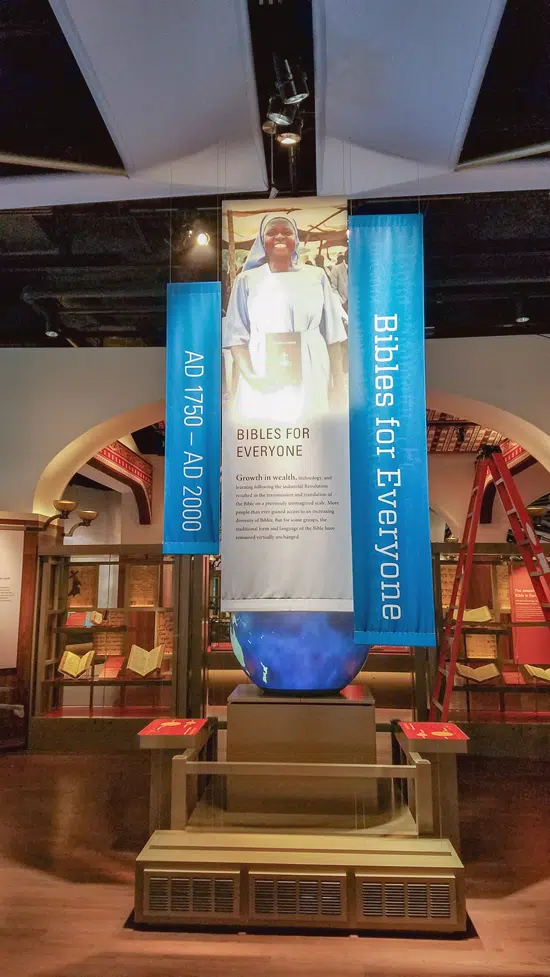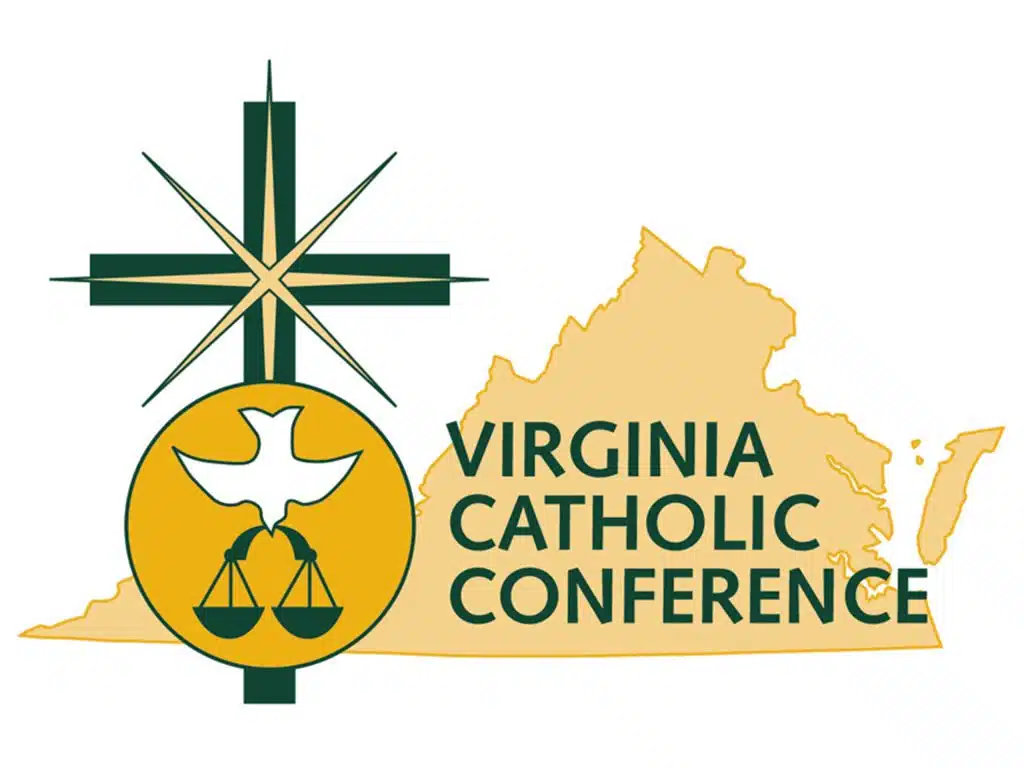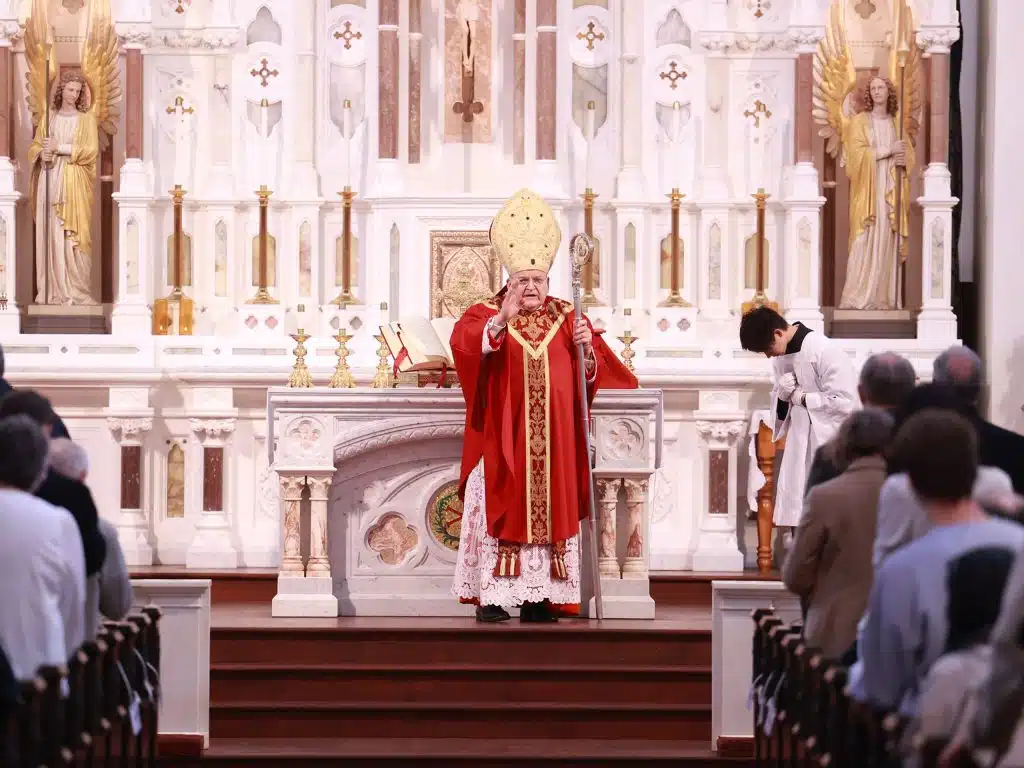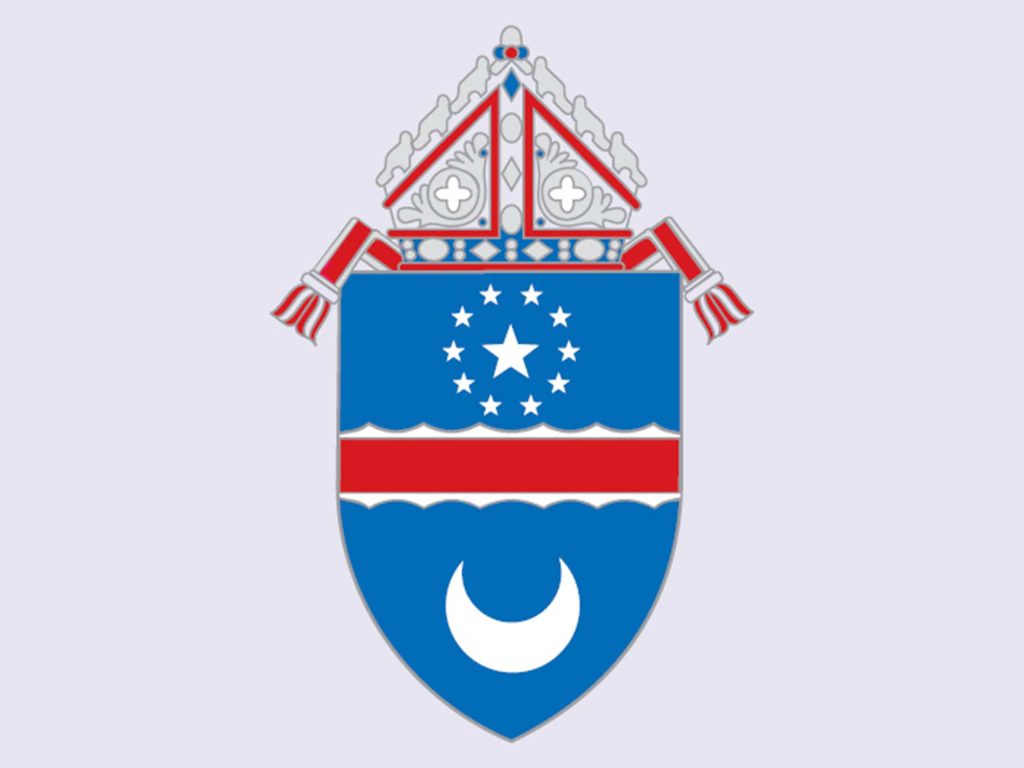A small, temporary exhibit tucked away on the first floor of the
newly opened, 430,000 square foot Museum of the Bible in Washington gives
visitors a glimpse of the art and history preserved by the Vatican library and museums.
Highly detailed replicas of the fourth century Codex Vaticanus,
the 14th century Urbino Bible and 16th century Bible of St. Cecilia are nestled
amid art from the Vatican Library. The walls — inspired by the upcoming Synod
for Young People, the Faith and Vocational Discernment — portray scenes from
important gatherings in church history.
“It’s a way for people to see some of the treasures of the
Vatican without having to travel to Italy,” said Brian Hyland, associate
curator.
The replica of the Bible of St. Cecilia — referred to as an
“Atlantic” bible because of its enormous size — was chosen for the image of St.
Timothy receiving letters from St. Paul. The caption notes that “the older
apostle passes down to the young disciple his experience, his suggestions and
his instructions.”
Nearby, a classical statuette of the Good Shepherd depicts Christ
as “a youth serving faithfully,” carrying a ram. The statuette is a facsimilie
of the original restored in the 18th century.
On the other side of the room, a volume of the massive Urbino
Bible is an important example of 15th-century Italian illumination,
Hyland said. It was commissioned by the Duke of Urbino, a mercenary prince,
humanist and patron of the arts.
“What I love about this is that at the beginning of each book of
the bible there is a scene that kind of tells you what it’s about,” said
Hyland, gesturing to the facsimilie, open to a page bordered with bright,
intricate designs, miniature vignettes from the life of Moses and at the top, a
large scene depicting the children of Israel leaving Egypt. The art is typical
of Renaissance paintings because “Egypt looks suspiciously like Tuscany” and
the people are wearing clothes that would have been contemporary to the artist,
not the ancient Hebrews.
Another display shows a replica of the Codex Vaticanus, “one of
the most important texts in the history of textual criticism,” said Hyland.
The Vatican has a long-term arrangement with the museum and will
switch out some of the items in a few months.
The museum, which held its grand opening Nov. 17, charges no
admission fees. It is situated in a six-story building that cost $500 million
to purchase, expand and renovate.
The entrance sets the tone, with nearly 40-foot tall “Gutenberg
Gates” comprised of 118 brass panels. They are inscribed with 80 lines of
Genesis written in Latin, as originally printed in the Gutenberg Bible, but in
reverse — so guests can create souvenier rubbings.
The lobby is far more futuristic, with a 140 by 15 feet LED
screen sprawled across the ceiling. The scenes change every few minutes to show
stained glass, landscapes and images from the museum’s collections.
The building includes a performing arts hall. The first performance will be of the Broadway play “Amazing Grace,” which will run for eight weeks.
The museum staff estimates that it would take nine days, moving at a pace of eight hours a day, to experience every activity and exhibit, so here are a few highlights.
If you go
“The World of Jesus of Nazareth” on floor three is an immersive exhibit, suitable for all ages,
depicting Israel in the time of Christ. Don’t miss the History of the Bible
exhibit on the fourth floor, showing
more than 600 artifacts and video portrayals of important translators in their
own words, including St. Jerome. Look for the “wandering friars” section
discussing the Franciscan and Dominicans; and nearby, the 16th-century prayer
book of Emperor Charles V of the Holy Roman Empire. A glass galley on the sixth floor has a fantastic view of
Washington, while nearby, Manna Café offers biblically inspired foods and a rooftop
garden.
The Museum is located at 400 4th St SW,
Washington. For more information, go to museumofthebible.org.
